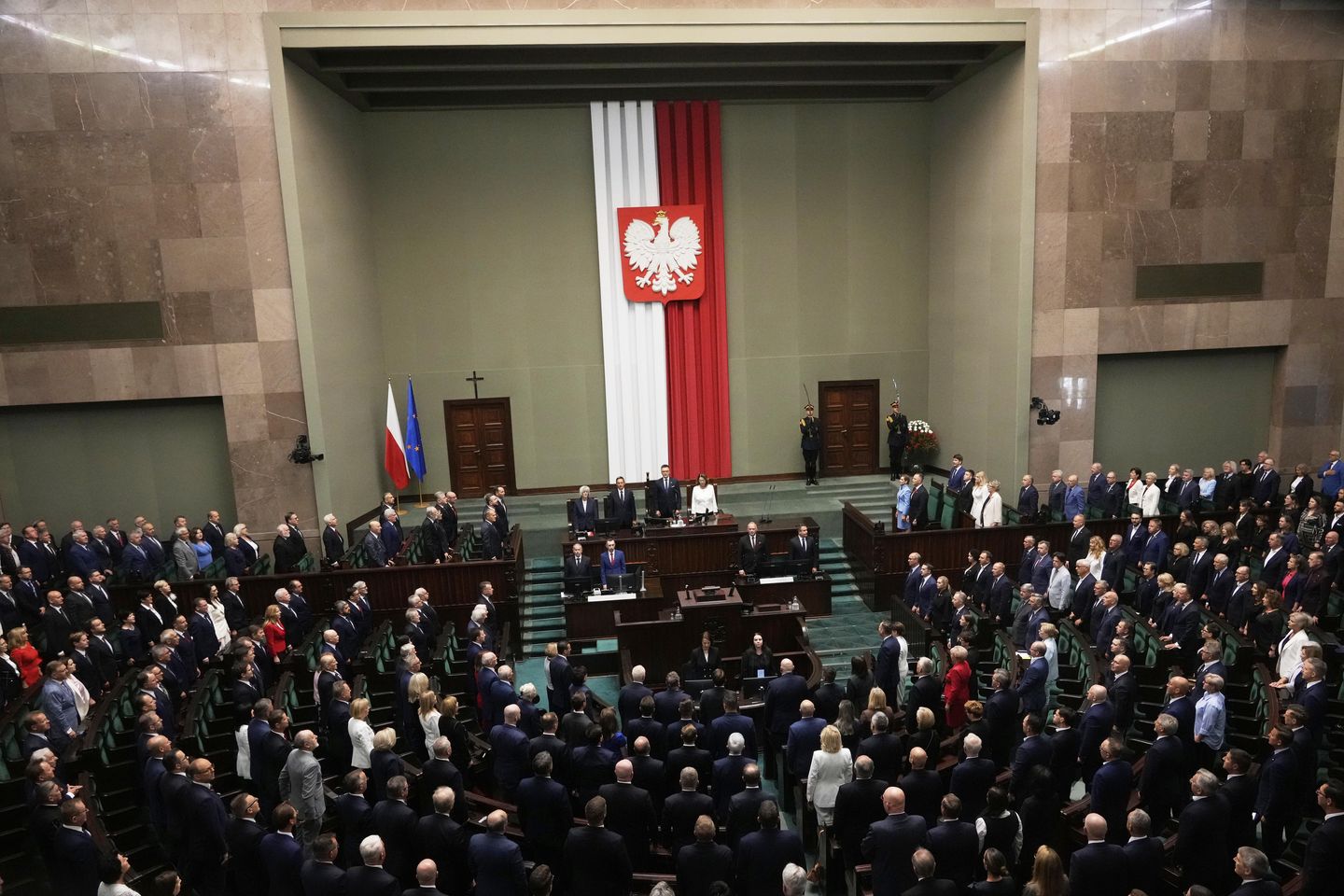
No country in Europe is taking the rising threat of an expansionist, emboldened Russia more seriously than Poland, where Warsaw is spending billions enlisting more soldiers, fortifying its borders and buying new, modern American weapons systems.
Poland is expected to spend upwards of $3 billion after signing a deal last week with the United States to upgrade its fleet of F-16 jet fighters to the top-of-the-line F-16 Viper model. The contract will be carried out by defense giant Lockheed Martin, which has built a 20-year partnership with the Polish Air Force.
The deal is only the latest military big-ticket item for Poland, which has been on a defense-related spending spree since Russia launched its full-scale invasion of neighboring Ukraine in February 2022. In the past three years, Warsaw has spent billions of dollars purchasing everything from AH-64E Apache helicopters to M1A1 Abrams main battle tanks.
“A modern army means highly-trained and well-equipped soldiers,” Wladyslaw Kosiniak-Kamysz, Poland’s deputy prime minister and defense minister, said on X.
Warsaw was spending about 2.7% of its GDP on defense before the invasion of Ukraine. That figure quickly jumped to 4.2% in 2024. The government plans to earmark an unheard-of 5% of its gross domestic product to defense-related purchases in 2026.
“In this way, Poland is providing a strong example to other European countries when it comes to honoring the NATO commitment to defense expenditure,” NATO officials said. “In the case of Poland, the support for greater defense spending was a unanimous, apolitical effort, agreed on by a comfortable majority.”
Poland joined NATO in 1999. Defense analysts say the country’s rapid transition from a Soviet-era military force to a leading power within the Atlantic alliance after the collapse of the Warsaw Pact was a costly challenge.
“Poland now leads the alliance in defense spending as a percentage of GDP, surpassing the United States, and has arguably emerged as Europe’s most capable military power and a key thought leader on defense matters,” European specialist Kateryna Kvasha wrote in an essay for the Wilson Center think tank. “This leadership is tested by multiple incursions into Polish airspace, sparking a national conversation about the rights of eastern flank nations to shoot down drones or debris entering their airspace.”
Russia’s “Special Military Operation” has led to a fear among some Poles that the fighting in Ukraine could spill over into their country.
Poland has opened up its coffers to help transform its military from that of a former Soviet satellite to a modern, Western force. In 2024 alone, the Polish Ministry of National Defense signed more than 130 contracts worth a total of more than $410 million.
“We should quickly become the first and strongest NATO army in Europe. That is what I will strive for in the coming years,” Polish President Karol Nawrocki said Friday in a speech recognizing the country’s Armed Forces Day celebration.
Lockheed Martin will partner with local industries to carry out the upgrade work in-country by “leveraging local expertise and facilities.” The company has invested $1.8 billion in Poland’s defense ecosystem during the past decade to expand local supply chain capacity and accelerate the delivery of critical systems.
The F-16 package will include the integration of a new radar system and an upgraded mission computer, along with electronic warfare advancements, an advanced targeting pod, and structural modifications that will extend the aircraft’s service life to 12,000 flight hours, Lockheed Martin officials said.
“The F-16 Viper upgrades strengthen Poland’s fleet for the missions ahead,” said Nick Smyth, Lockheed Martin’s vice president of business development. “These enhancements deliver advanced airpower capabilities by keeping the F-16 interoperable with 5th Generation platforms like the F-35, aligned with NATO missions, and backed by sustained readiness and partnership with Polish industry.”
Poland has a long and complicated history with Russia, although the two countries do not currently share a border. In 1920, it fought a war with the new Soviet state, soon after the Russian Revolution and the end of World War I. The Soviet Union invaded Poland from the East in 1939, about two weeks after Nazi Germany invaded from the West.
This year, Poles celebrated the 105th anniversary of their victory during the Battle of Warsaw in 1920. Fighting alongside Ukrainian forces, the Polish military successfully repelled the Red Army’s march to the west.
“For centuries, Russian imperialism has been a moral threat to our freedom. Poland’s political tradition teaches that Russian expansionism rests on a legacy of domestic despotism, in which the only free man is the ruler himself,” Polish President Karol Nawrocki said Friday while commemorating the battle. “But, precisely because Russian despotism is the enemy of freedom, Russian imperialism can only be defeated through an alliance of free peoples.”
Poland has also emerged as one of neighboring Ukraine’s most important military benefactors. Since the invasion, Warsaw has provided Kyiv with more than $600 million worth of tanks, including more than 250 Soviet T-72 tanks and 14 German-made Leopard 2 main battle tanks.
Poland also beefed up its security by hosting NATO troops, including a multinational brigade led by the United States as the framework nation. After the 2022 NATO Summit in Madrid, which identified Russia as the pressing threat, the alliance agreed to deploy additional forces to NATO’s eastern flank.
Last year, Polish officials announced the East Shield program, a multi-billion-dollar deal to fortify its eastern border with Belarus and the Russian enclave at Kaliningrad. The East Shield includes physical barriers to impede movement across the border and the deployment of advanced surveillance systems.
According to Polish media reports, Warsaw also added minefields to the East Shield project.
“We are protecting our border. We saw what happened to Ukraine during the Ukrainian war, so we need to be prepared for a potential attack,” said Karol Frankowski, a press spokesperson for the Polish army.
Earlier this year, Poland announced plans for every adult male in the country to undergo military training to serve in reserve units as part of a broader effort to grow the army from its current 200,000 soldiers, including reservists, to a half-million soldiers.









![Florida Man With Violent History Arrested for Choking a Cop [WATCH]](https://www.right2024.com/wp-content/uploads/2025/06/Eleven-Stabbed-in-Attack-at-Salem-Homeless-Shelter-Across-From-350x250.jpg)







